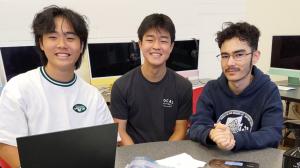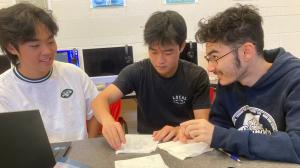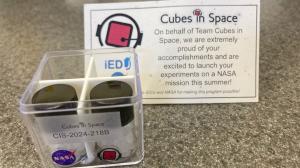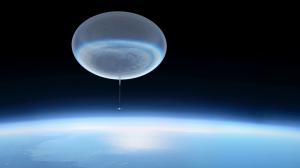Maui HS students’ climate research to take flight with NASA
University of Hawaiʻi at MānoaA team of four Maui High School students, under the guidance of University of Hawaiʻi professors, created an experiment to measure how plastic degrades and releases greenhouse gasses that was selected by the program Cubes in Space, in partnership with NASA, to fly on a high-altitude balloon. The goal is to determine ways to reduce the impacts plastics have on the environment. The flight is scheduled for late August/early September from NASA’s Columbia Scientific Balloon Facility in New Mexico.
In the official announcement that the Maui High experiment was selected, the feedback from the review stated: “Exceptional proposal and technical diagram!! Well-researched and written. Definitely a demonstrated need and relevant. Highly detailed experimental procedures. We will use this proposal in the future as a model for future educators and students.”
The students have worked with professors and graduate students from the UH Mānoa Department of Mathematics on the experiment since November 2023.
“The students chose to focus on material science and decided to exploit the conditions offered by the scientific balloon such as high levels of radiation to measure and analyze ethylene emissions from plastics when exposed to to consistent UV-A/UV-B radiation in the stratosphere,” said UH Mānoa Department of Mathematics Professor Monique Chyba, who was one of the professors who worked with the Maui students. “It was challenging for the students to design an experiment accounting for the given space constraints and at the same time maximizing the potential for success. They really did learn about the scientific process and went through many iterations before the final proposal.”
The UH Mānoa faculty members met with the students in person on Maui and over Zoom in the spring semester to come up with a proposal and on-time submission despite the challenges created on Maui.
“I am so glad that we have been provided with so many opportunities despite the difficulties that our year has had,” said student Holden Suzuki. “After the Lahaina fires many of us lost out on not only instructional time, but also projects and homes, so it is so important that we have been provided some kind of reprieve.”
Critical climate change research
As global plastic demand rises, so do its potential negative climate change impacts. UV radiation causes plastics to emit greenhouse gasses, such as ethylene gas, worsening climate change.
This study aims to measure these emissions short-term exposure to sunlight, unlike previous studies that focused on long-term exposure. Using a stratospheric balloon, this experiment aims to measure how much plastic degrades and releases gasses at higher altitudes, where increased solar radiation accelerates this process. NASA stratospheric balloons float to altitudes around 120,000 feet, or more than twice as high as commercial airplanes.
If the data supports the students’ hypothesis, it will suggest that as our atmosphere weakens due to climate change-related factors and UV radiation will more readily pass through, it will directly cause more greenhouse gas emissions from existing dumped consumer plastics, adding to the worsening climate crisis.
“Collectively as a team, we’ve had the lucky opportunity to continue a passion project of ours through the guidance of Dr. Chyba and Dr. Mileyko,” said student Wilson Lau. “I’ve had the opportunity to experience first-hand research that will encompass my educational passion within STEM.”
Student Joshua Mori added, “Working with Dr. Chyba and Dr. Mileyko and their exceptional team has been an amazing experience for my academic journey. These amazing mentors have given me so much hope for the future, and I feel excited to tackle more challenges in the future.”
The experiment is funded through a National Science Foundation RAPID grant awarded to UH Mānoa in the wake of the deadly Maui wildfires. Along with co-principal investigator Chyba on the team are UH Mānoa College of Education Professor and project principal investigator Tara O’Neill, and co-principal investigators UH Mānoa Department of Mathematics Associate Professor Yuriy Mileyko and UH Maui College Assistant Professor Thomas Blamey.




